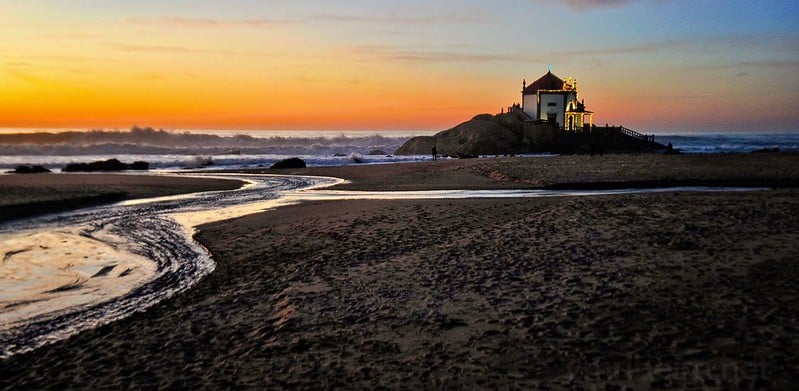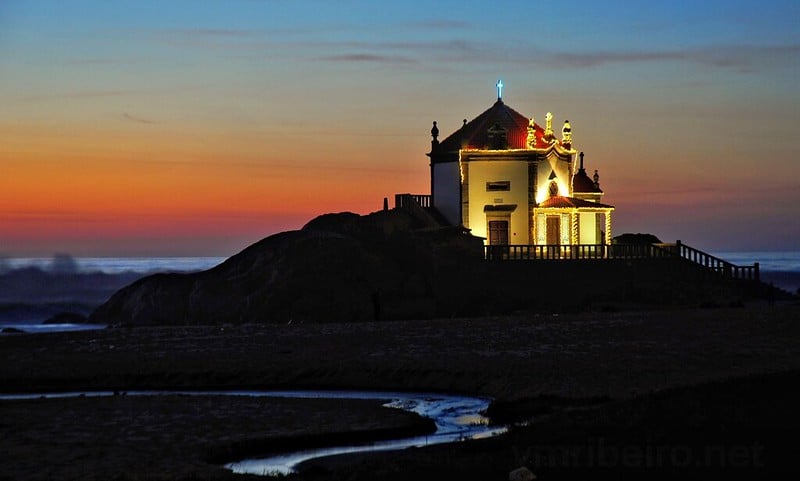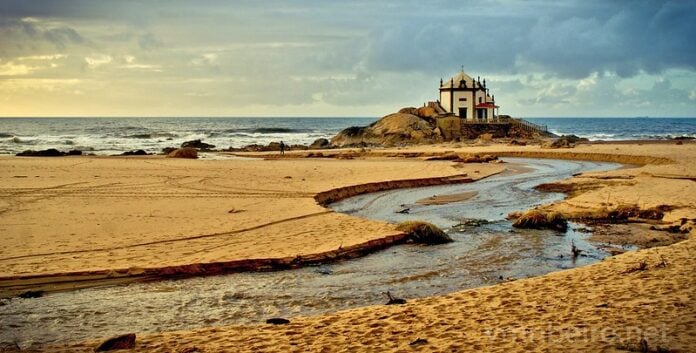The Capela do Senhor da Pedra, also known as the Chapel of the Lord of the Stone, sits on top of a rock on Miramar beach in Vila Nova da Gaia, Porto. A mysterious place that carries legends and stories, it is about a 20-minute drive from the center of Porto and one of the most picturesque churches in Portugal. It looks as though the mighty Atlantic Ocean will swallow it whole at any moment and yet it has survived for more than 300 years.
History
The Capela do Senhor da Pedra was founded on June 17, 1763. The inscription on the tile mosaic framed at the entrance indicates that the giant stone originally housed a pagan or possibly Celtic temple. After Christianity arrived in Portugal, efforts were made to free the land from its pagan roots. Thus, the current chapel was built on top of the rock which has served as a place of worship for over 2,000 years.
Despite the conversion to Christianity, ceremonies linked to pagan worship still take place today at the site on nights when the moon is full. It is common to find melted candles left by neo-pagan worshippers on the rocks and sand next to the chapel.
A pilgrimage to the Capela do Senhor da Pedra takes place each year beginning on Holy Trinity Sunday (the Sunday after Pentecost) and continuing until the following Tuesday. The festivities include local entertainment and traditional dances known as rusgas.
In the past, pilgrims would reach the chapel early in the morning. The women would carry the meal on their heads and men carried wine in ox horns or gourds. The groups would worship, picnic, and dance at this hallowed spot.

Legends and Stories
A number of legends and stories exist regarding the construction of the Capela do Senhor da Pedra. Some believe that the image of Christ ended up on the rock, brought by the sea itself. Others believe that the chapel was built as payment for a promise, by someone who survived a shipwreck on the high seas and was saved by a wave that carried him to the rock. Another famous legend says that the original intended site for a hermitage to Senhor da Pedra was moved when a mysterious light appeared every night on the rocks next to the sea. Believing this was a sign from heaven, the locals moved their church to the rock. Finally, another legend says that one foggy morning, D. Sebastião stuck his horse’s hooves in one of the rocks but ended up turning back without going further onto Portugal’s beaches. This explains the two rounded marks that can be seen there.
The one aspect of the Capela do Senhor da Pedra that everyone can believe is that the view of the church is truly a sight to behold, buffeted by the waves but still standing. Once you see the church, you will understand why Miramar Beach was voted the tenth most beautiful in Europe by the “European Best Destinations” organization.



